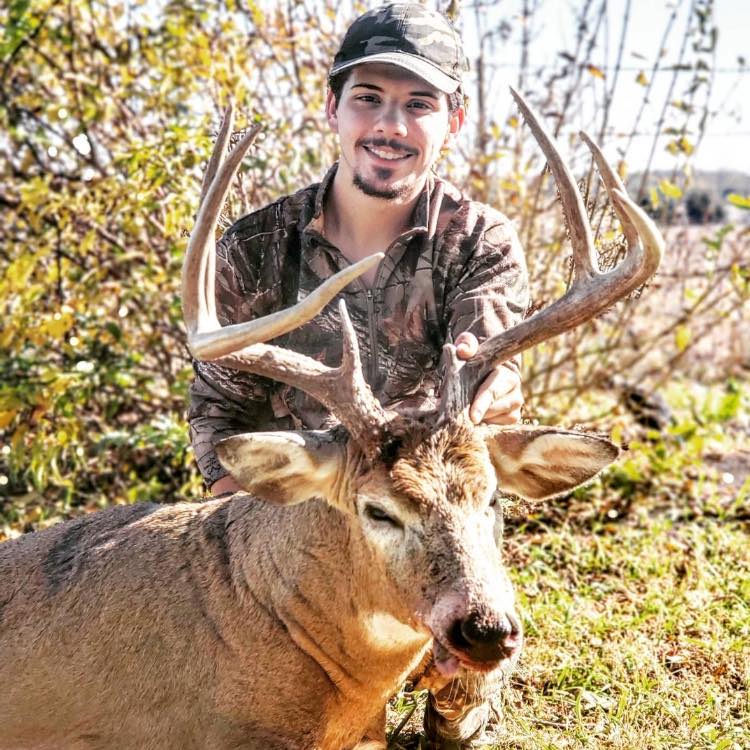Knowing the distance to your target is essential before taking a shot. Unfortunately, our eyes are for seeing, not measuring the distance between two objects. To accurately measure the distance between two objects, we need the help of technology.
And as a hunter, this means one thing, purchasing a rangefinder, which brings us to the question; which rangefinder should you buy? But before we delve into how to select the right rangefinder, let’s first see how they work.
How Does A Rangefinder Work?
At the push of a button, a rangefinder will emit a laser beam towards your desired target. The laser beam will bounce back off the target. The device will measure the time it took the laser to leave and come back.
Using this time, the unit will calculate the distance traveled by the beam and display it for you. Sounds pretty straightforward, right? Well, not so fast, because you see laser beams tend to bounce back easily off reflective surfaces.
However, when out hunting, you will be hard-pressed to find a reflective surface. On top of this, your prey will have a hide that will make it difficult for the laser to bounce off.
So How Do Rangefinder Binoculars Work?
Instead of buying a rangefinder you can opt for a pair of rangefinder binoculars. The obvious benefit of such a binocular is that it is a two-in-one device. Therefore, it can be used for measuring distance from a target as well as scoping an area.
Rangefinder binoculars use the same laser technology used by stand-alone rangefinders to measure distance. However, there are those that use markings superimposed on the optical lens. Called reticle rangefinder binoculars they are considerably affordable.
However, they may not be the best for beginners as they require the use of a formula, making them somewhat manual. Rangefinder binoculars give you the measurement readings in the same way as a rangefinder.
These tend to be pricey, but you can get good quality rangefinder binoculars for less than $1000+/-. Especially if you are hunting targets less than 500 yards away.
However, it in some instances it may be better to buy a rangefinder, So what should you consider when buying one.
How To Choose A Rangefinder for Hunting
Consider The Range
The most important component in a rangefinder is the range. The average range of rifle hunting rangefinders is 500 yards to 1500 yards. However, these distances are usually measured using reflective surfaces.
And as we pointed out earlier, wild animals are not the most reflective. Therefore, it is essential to consider how far you will be shooting when considering the range. If you intend on aiming at targets, then a maximum range of more than 500 yards is recommended.
Also, the area where you are hunting is essential. For hunters in the midwest and the east coast, a maximum range of 500 yards will be sufficient. However, if you are hunting in the west, then a longer maximum range will be essential.
Most budget rangefinders feature an average maximum range of 600 yards. This translates to a range of 300 yards out in the wild.
Opt For Rangefinders With Second Target Priority
Rangefinders can be classified into two main categories, for golfers and hunters. Needless to say, these two are very different. Golfing rangefinders are typically on the first priority. So what does this mean?
It means that the rangefinder will measure the range to the first visible object. This makes sense on a golf course, but not so much for hunting.
For hunting, you need a rangefinder in the second priority mode. This means that the rangefinder will ignore the objects at the front and focus on objects behind them. As such, you will be able to measure the distance to a deer behind some branches.
What Is The Right Magnification?
To be able to aim at a target from 200 or 300 yards, you need to see it. Unfortunately, our eyes cannot pick out objects that far out, especially out in the world. This is where magnification comes in.
Rangefinders have varying magnification ranges that help bring your target closer to your eye. That being said, the question becomes, what magnification range is ideal for me? Well, it depends on where you are hunting and the distances.
On average, rangefinders have a magnification range of4x to 8x. A higher magnification may seem ideal, but the higher the magnification, the narrower the field of view. For hunting, you need a wide field of view.
As such, a maximum magnification of 6x is recommended for hunting rangefinders, especially the inexpensive ones. Some offer magnification ranges of 8x and above, but these are mostly expensive high-end models.
Illuminated Vs. Black Reticle
As with any other optical device, rangefinders have a reticle. This is the crosshair you use to aim at a target. Different models come with varying kinds of reticles. Some feature black crosshairs that you superimpose onto a target to aim at it.
These crosshairs work well during the day but struggle in low light conditions. For this reason, there are also illuminated reticles. These types of reticles are usually made of LEDs and light up.
The downside to using illuminated reticles is that they tend to get washed out during the day. So what is the solution? The best thing to do is to get a reticle with backlighting. The backlighting will address the problem of not seeing the aiming points in low light.
Angle Of Compensation
This will be an essential feature depending on how you shoot. Your shooting angle will affect the accuracy of your shot. The distance your rangefinder gives you may not be 100% accurate, depending on your shooting angle.
To remedy this, you need a rangefinder with angle compensation. The purpose of this feature is to give you the actual distance of a target, taking into account your shooting angle. Thus whether you are shooting downhill or uphill, you get an accurate reading.
Not all rangefinders have this feature. For your first rangefinder, it will be essential to consider this feature when making your purchase. There are a lot of great budget rangefinders that have angle compensation.
Go For Simplicity
Some rangefinders come with a whole host of features such as ballistics reports. While they are beneficial, they can be unnecessary. For starters, rangefinders with such features tend to be pricey.
Secondly, when you are out hunting, you want a rangefinder that you can point and shoot. This is why ease of use is essential. There is no point in getting a pricey model that takes you weeks to figure out.
Another important aspect is the weight. For your first rangefinder, you want something you can easily dip inside your pocket.
Conclusion
Trying to figure out how far your target is from you, is not the best way to go about hunting. A rangefinder will take the guesswork out and give you accurate distances. For your first rangefinder, you probably want something affordable.
Models such as the Simmons Hunting Laser Rangefinder offer great features while costing less than $200.

About The Author:
Lake Streeter, A Gun enthusiast, and loves to hunt in the middle of the wood. Always check the latest hunting gears out in the market and try to share his honest opinion with the audience in Hunting Nook.
